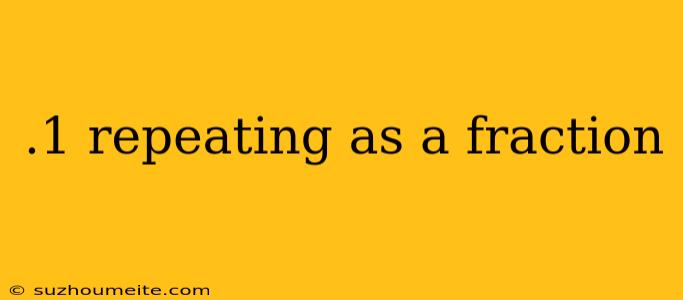.1 Repeating as a Fraction
Have you ever wondered what the decimal .1 repeating represents as a fraction? In this article, we'll explore the answer to this question and learn how to convert repeating decimals to fractions.
What is .1 Repeating?
.1 repeating, also known as .111..., is a decimal that has an infinite string of 1s after the decimal point. It's a type of repeating decimal, where a sequence of digits repeats indefinitely.
Converting .1 Repeating to a Fraction
To convert .1 repeating to a fraction, we can use a simple trick. Let's assume that .1 repeating is equal to x:
x = .111...
We can multiply both sides of the equation by 10 to get:
10x = 1.111...
Now, subtract the original equation from this new equation:
10x - x = 1.111... - .111...
This simplifies to:
9x = 1
Dividing both sides by 9, we get:
x = 1/9
So, .1 repeating is equal to 1/9 as a fraction.
Why Does This Work?
The trick we used to convert .1 repeating to a fraction works because of the way repeating decimals behave. When we multiply a repeating decimal by a power of 10, the decimal point shifts, but the sequence of repeating digits remains the same.
By subtracting the original equation from the new equation, we eliminate the repeating decimal part, leaving us with a simple fraction. This technique can be used to convert any repeating decimal to a fraction.
Conclusion
In this article, we've learned that .1 repeating is equal to 1/9 as a fraction. We've also discovered a simple trick for converting repeating decimals to fractions. This technique can be applied to any repeating decimal, making it a valuable tool for anyone working with fractions and decimals.
